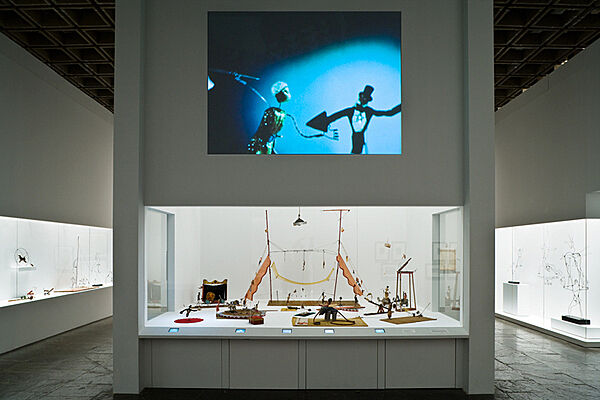In the 1930s, Alexander Calder began to make abstract, kinetic sculptures, experimenting with counterbalance and wind as tools for imbuing his pieces with motion. Object with Red Discs, one of the earliest of his wind-driven sculptures, is made using methods the artist learned in engineering school. Calder cut simple geometric shapes out of sheet metal, attached the shapes to wires, and balanced them against counterweights on a supporting rod. Before assembling the work, he measured out all the elements, projected the angles to be described when the object was in motion, and determined the arcs of the spheres as they moved, adjusting them to achieve dynamic equilibrium. In Object with Red Discs, the small pyramidal base, steel rod, and thin wire branches allow the sheet metal discs and wood balls to float and move in response to air currents or touch.
On view
Floor 8
Date
1931
Classification
Sculpture
Medium
Painted steel rod, wire, wood and sheet aluminum
Dimensions
Dimensions variable
Overall: 87 1/2 × 52 1/4 × 24 1/2 in. (222.3 × 132.7 × 62.2 cm)
Accession number
86.49a-c
Credit line
Purchase, with funds from the Mrs. Percy Uris Purchase Fund
Rights and reproductions
© Calder Foundation, New York / Artists Rights Society (ARS), New York









